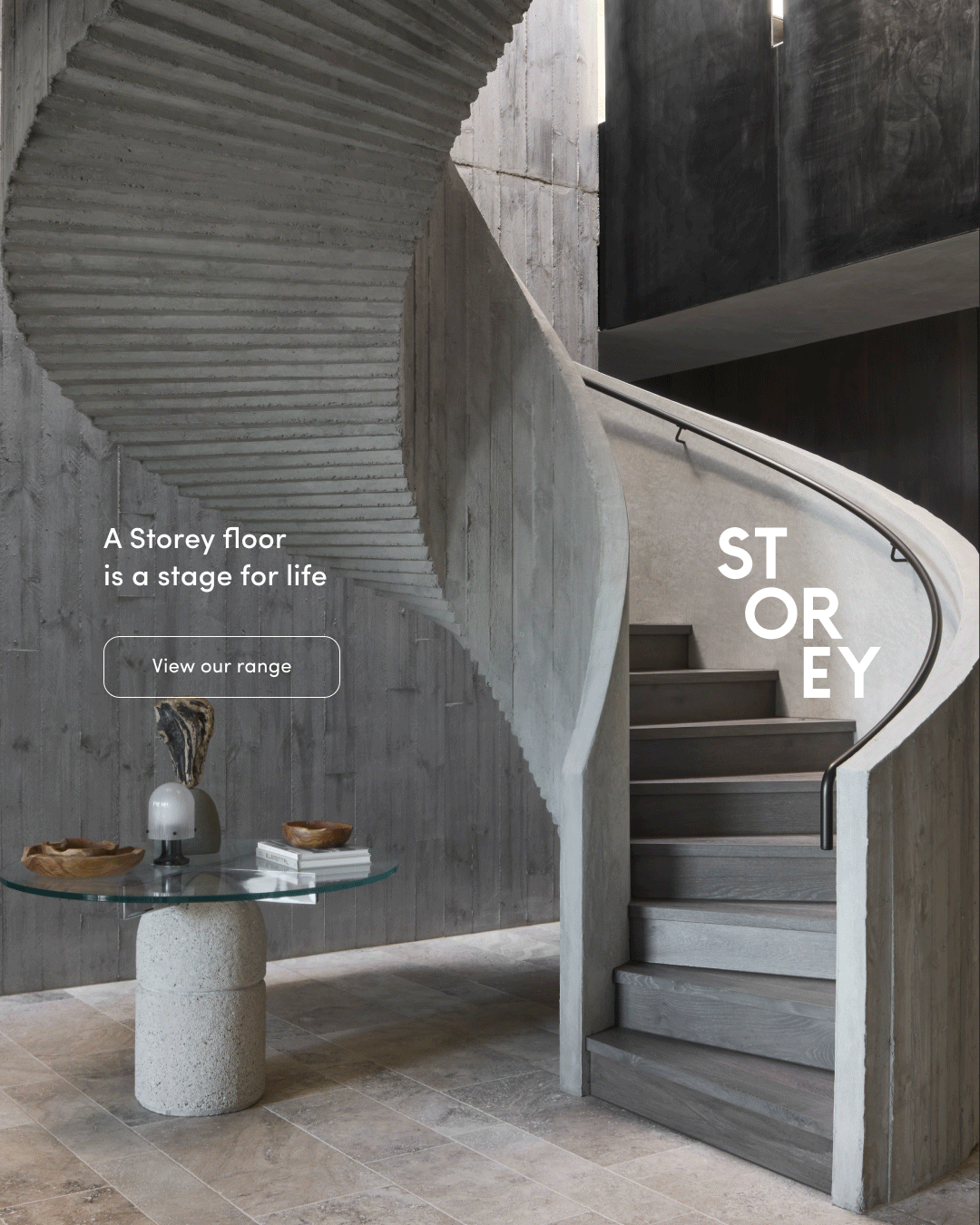
A Rare Entity – Arndt Residence and Artbarn by CHROFI
With so many diverse typologies forming the one brief – an art gallery, a home and a guest space – Arndt Residence and Artbarn is a rare entity indeed. The curious uniting of art, landscape and architecture in such a removed setting is reminiscent of the process by which the project came into being. Together with an internationally-based client, CHROFI carefully managed both a repurposing and a new build to create a unique addition to Cape Schanck.
Approached more as an estate than as a collection of buildings, the site was viewed as an opportunity to arrange domestic scale buildings and uses across a unique landscape setting, explains CHROFI Director Tai Ropiha. Perhaps the least unusual component of the process was the disparate way that all the elements even came together on site. Located in Sydney, CHROFI was managing the design and construction process remotely with a construction team based in Victoria, whilst the client was based in Europe. “The displaced relationships continued throughout the build due to the pandemic,” Tai adds, “with our client remaining in Berlin and the state-specific lockdowns preventing us from travelling to site to oversee the builder.”
Situated on the edge of the Bass Strait, the project sits well primed, inhabiting some five acres of land. In deciding how to occupy and master plan the site, there presented numerous considerations in how the spaces could strengthen a greater whole. “The project accommodates not just family life but extends to business and social activities,” says Tai, “and sets these activities against the meditative and timeless quality of the Australian landscape.” Ultimately, it was the location and the outlook that inspired the collective approach.
Already in place was a home that, although endowed with minor additions over the years, was in ill-repair. “Our client was keen to re-use the building from a sustainability perspective,” recalls Tai, “and so we undertook a curatorial process to strip the building to its two-storey core, revealing its structural form and a more vertical spatial quality – this became the Artbarn – a place for storing, displaying and making art.” In keeping with the localised approach, more domestic elements such as doors and windows were removed to give the building, as Tai says, “a more abstract quality.”
Located on the fringe of Mornington Peninsula National Park, the home is immersed in nature, of both land and sea.
Located on the fringe of Mornington Peninsula National Park, the home is immersed in nature, of both land and sea. Whilst mostly flat, undulations directed the location of the resulting buildings and engagement with the site. “The two buildings sit as sculptural counterpoints that highlight the qualities of the landscape, sited to capture the winter sun and with purposeful connections to the surrounds,” explains Tai. Describing the connection to its location, he adds, “we gave the new house a simple form, abstracted from sheds and barns – giving it a rural familiarity, while also creating interior volumes that could support the display of artworks.”
In deliberately over-scaling the interior, the spaces feel cathedral-like, almost carrying the gravitas of a significant public building whilst simultaneously managing to remain intimate. “The design of the home explores the intersection between architecture, art and landscape to create an elemental ensemble of spaces deeply connected to place,” Tai describes. As the forms engage with the landscape, the aim was to make something both intriguing and memorable. “The overlay of art then heightens the interplay between the landscape and the architecture,” he adds.
Although there is a commonality that binds the structures across the site, with shared approaches and a core philosophy, the functionality of the spaces drives the subtleties. “The project has a somewhat gallery aesthetic for its main spaces,” says Tai, “maintaining a neutral condition for the display of art – however, this quickly gives way to the use of bold colour as one moves into the more personalised bedrooms and bathroom spaces.” Though the residence feels distinctly like a home, there is a purposeful sculptural quality to the Artbarn, and a singular rough render finish lends a uniformity to the form whilst also giving the structure a ruin-esque impression.
Located at the apex point on the site, the Artbarn and its presence is emphasised even further. “The locale is windswept and subject to rolling storms,” Tai says, “and any element of such vertical presence was always going to be exposed to the elements, which was a consideration. The house, however, sits lower and is more grounded and protected from the weather, with spaces that address either the broader coastal landscape to the south or the protected sunny lawn to the north.” In their differing positions, the two structures offer a sense of balance and complement one another.
From an undoubtedly unique design and construction process, through a simplification and the overlaying of such confidence and precision, a truly inimitable combination emerges. Self-contained yet connected, both buildings hold strong in their own positions on site as the undulating and constantly changing landscape further animates the scene.

![Book Flatlay Cover Front Transparent Trio[1]](https://d31dpzy4bseog7.cloudfront.net/media/2024/06/07080212/Book_Flatlay_Cover_Front_Transparent_Trio1.png)



















